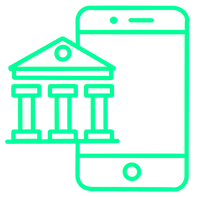
Module 25
The Economy & Federal Reserve
This module outlines key economic concepts and the role of the Federal Reserve in the U.S. Economy.
Explore the causes and effects of inflation, understand the structure and functions of the Federal Reserve, and learn about how we measure and grow the world’s largest economies.
Module At A Glance
Grade Levels:
9th -12th
Est. Length:
2-4 Hours (24 slides)
Activities:
5 Activites
Articles:
4 Articles
Languages:
English & Spanish
Curriculum Fit:
Math, Business, Economics, CTE, Social Studies
Standards Alignment:
CEE National Standards, Jump$tart National Standards & Relevant State Standards

Guiding Questions
- What factors contribute to the size and scope of the global economy?
- How significant is the role of the United States in the global economy?
- How do we measure the economic output of a country?
- What are the advantages and disadvantages of having the US Dollar as a reserve currency?
- How does the Federal Reserve influence the U.S. economy?
- How do inflation and recessions impact individual financial goals and behaviors?
- How have historical economic crises shaped today’s economic strategies and policies?
Enduring Understandings
- The global economy is vast and the United States plays a critical role with the 2nd largest economic output.
- Gross Domestic Product (GDP) is a crucial measure of economic activity.
- The U.S. dollar's status as a reserve currency brings significant benefits to global trade, investment, and economic stability.
- The Federal Reserve serves as the central bank of the United States, regulating the monetary supply and maintaining financial stability through various economic cycles.
- Historical economic events like the 2008 recession provide essential lessons that continue to influence policies today.
Module Vocab & Key Topics
Global Economy
The international exchange of goods and services that is expressed in monetary units of account.
Gross Domestic Product (GDP)
The total monetary or market value of all the finished goods and services produced within a country's borders in a specific time period.
Reserve Currency
A foreign currency held in significant quantities by governments and institutions as part of their foreign exchange reserves, often used in international transactions.
Nominal GDP
Measures a country's total economic output (the value of its goods and services) using current prices, without adjusting for inflation.
Real GDP
The economic output of a country, when adjusted for price changes (inflation or deflation), provides a more accurate figure of a country's economy size and growth rate over time.
Inflation
The rate at which the general level of prices for goods and services is rising, subsequently eroding purchasing power.
Recession
A significant decline in economic activity spread across the economy, lasting more than a few months, typically visible in real GDP, real income, employment, industrial production, and wholesale-retail sales.
Interest Rates
The amount charged by a lender to a borrower for the use of assets, expressed as a percentage of the principal, usually noted on an annual basis known as APR.
Monetary Policy
The macroeconomic policy laid down by the central bank, involving management of money supply and interest rate and aimed at achieving maximum employment, stable prices, and moderate long-term interest rates.
Federal Reserve (Fed)
The central bank of the United States, which is responsible for setting monetary policy, regulating banks, maintaining the stability of the financial system, and providing financial services to depository institutions, the U.S. government, and foreign official institutions.
Open Market Operations (OMO)
Activities by a central bank to buy or sell government bonds on the open market to expand or contract the amount of money in the banking system.
Quantitative Easing (QE)
A monetary policy wherein a central bank buys predetermined amounts of government bonds or other financial assets in order to inject liquidity directly into the economy.










